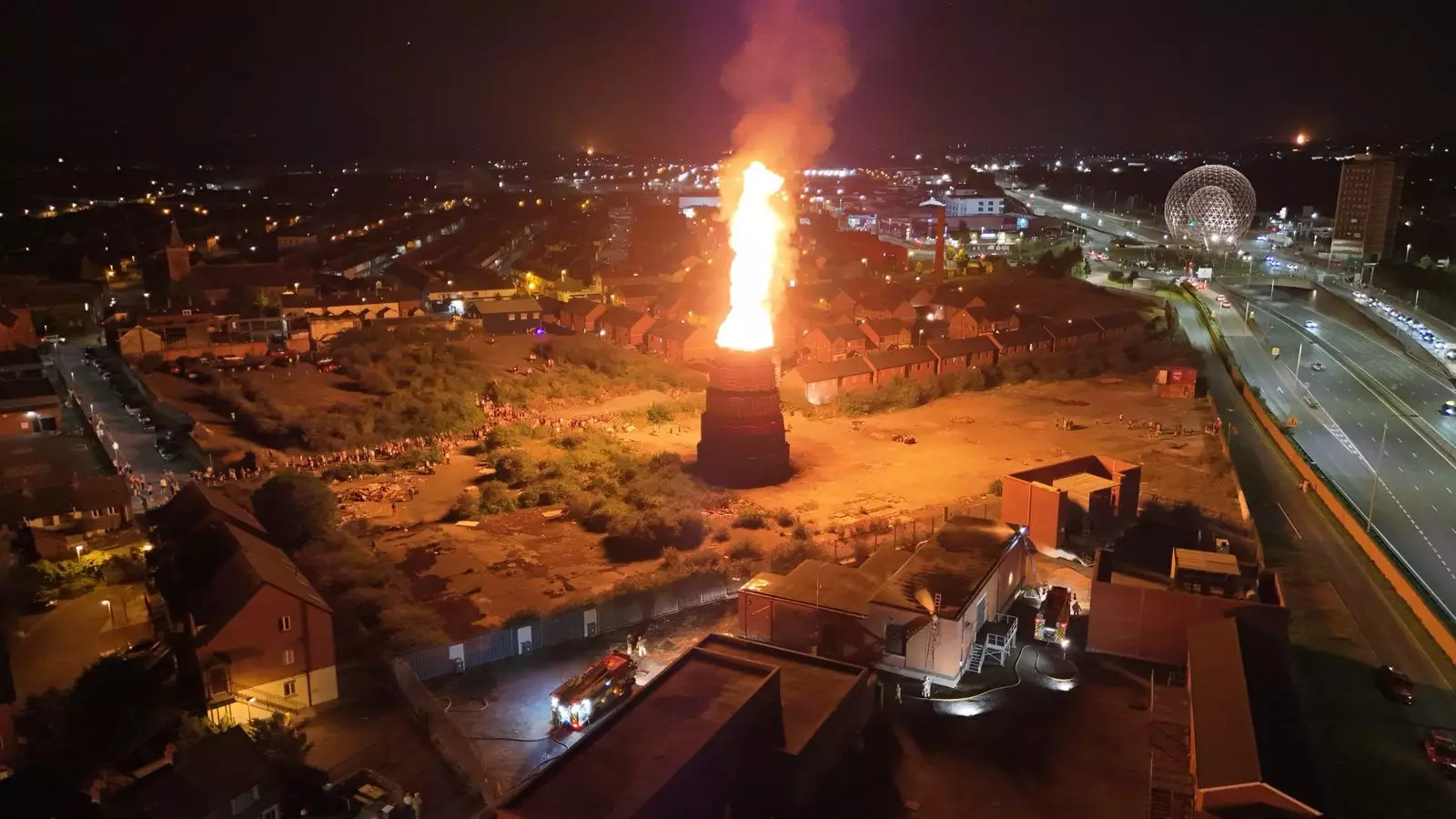Northern Ireland’s annual bonfire chaos reveals a troubling pattern of neglect and systemic failure. Despite repeated warnings from officials, environmental crises, and safety concerns, the tradition of lighting large-scale bonfires persists, often at the expense of community safety and ecological sustainability. The incident at Meridi Street, where an asbestos-containing site was set ablaze, exemplifies how authorities’ admonitions are dismissed, risking catastrophic health and environmental consequences. This recklessness highlights a broader societal failure to balance tradition with responsibility, unveiling a contempt for regulation and a misplaced valorization of historical rituals that threaten to undermine public health.
The decision to go ahead with such a hazardous bonfire, despite explicit warnings and the stark danger posed by asbestos and proximity to critical infrastructure, signals a disturbing complacency among organizers and local authorities alike. The repeated pattern of lighting these gigantic fires, without adequate oversight and accountability, underscores a deeper cultural issue: the prioritization of historical symbolism over community safety. Such neglect not only endangers lives but also diminishes public trust in institutions tasked with safeguarding the public.
Political Divides and Toxic Symbols
At the heart of these bonfires lie not just flames, but complex political tensions and entrenched societal divisions. The traditional significance attributed to the Bonfire Night, commemorating William of Orange’s victory at the Battle of the Boyne, continues to fuel sectarian sentiment. While for some it’s an expression of cultural identity, for others it has become an emblem of division, exclusion, and historical grievances. Each year, these fires reassert a narrative of supremacy that perpetuates conflict rather than healing societal rifts.
The disturbance is compounded by provocative displays—effigies of political groups, offensive posters, and incendiary symbols—further stoking animosity. The burning of an effigy related to Irish nationalism or a picture bearing violent slogans illustrates how these events are increasingly weaponized to reinforce divides. By allowing such displays under the guise of tradition, the authorities inadvertently legitimize and amplify tensions, risking escalation in potentially volatile communities.
It is this toxic blend of history, symbolism, and political posturing that renders these bonfires so controversial. Rather than serving as unifying cultural observances, they often deepen divisions, casting a shadow over efforts for community reconciliation. Such spectacles, cloaked as heritage, obscure the need for a more inclusive and reductionist approach—one that respects the sensitivities of all communities.
The Myth of Heritage Versus the Reality of Harm
Proponents of the bonfire tradition often argue that these events are expressions of cultural pride and resilience. Yet beneath this veneer lies a stark reality: the environmental damage, public health risks, and social disturbances they cause are frequently overlooked. The burning of materials like asbestos under the guise of celebration starkly illuminates the dissonance between tradition and safety.
Moreover, the logistical nightmare created by these events—such as a surge in emergency calls, injuries, and fire hazards—exposes a failure of foresight and planning. Firefighters are overwhelmed by routine incidents exaggerated by the sheer scale and often reckless organization of these bonfires. Their efforts are hampered by recurring complacency, further compromising safety and public trust in emergency services.
The glorification of these rituals as a cornerstone of identity neglects the pressing need for reform. Society must question whether celebrating such dangerous customs is justified when they threaten health and social cohesion. Progress demands a reevaluation of what these traditions mean and whether they are worth risking lives and environmental integrity.
Toward a Safer and More Inclusive Future
While the cultural and political significance of these bonfires is undeniable, the ongoing disregard for safety and environmental considerations calls for urgent reform. Authorities and community leaders have a moral obligation to navigate these treacherous waters with a commitment to adaptation and change. The time has come to shift the narrative—reimagining heritage that unites rather than divides, respecting safety standards, and safeguarding our environment.
Creating alternative forms of commemoration—such as community festivals, educational campaigns, or cultural exhibitions—could serve as powerful symbols of shared history without risking catastrophe. Education campaigns emphasizing environmental responsibility and promoting dialogue among divided communities might pave the way for a less destructive future.
The challenge lies not in erasing tradition but transforming it—finding ways to honor history without perpetuating danger and division. Leaders must lead by example, demonstrating that pride in heritage need not come at the expense of public safety or environmental health. Only through such conscientious efforts can Northern Ireland hope to reconcile its past with a safer, more inclusive future that values all its communities equally.



Leave a Reply